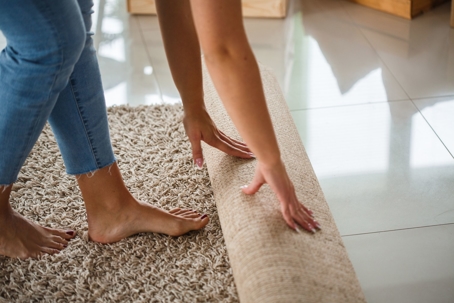Many people are surprised to learn that indoor air is often more polluted than outdoor air, even in developed areas. According to EPA research, concentrations of pollutants can be 2 to 5 times higher in indoor air than outdoor air. But how does this happen, and what can we do about it?
Below, our indoor air quality experts will provide a list of common sources of indoor air pollution, along with tips to get healthier air in your home.
5 THINGS THAT MAKE INDOOR AIR QUALITY WORSE
Many of us spend the majority of our time indoors, so maintaining healthy indoor air quality is essential. Here are some common sources of indoor air pollution and some steps you can take to improve your air quality inside.
1. Combustion Appliances
Appliances that burn gas or oil to run produce by-products called combustion products. A common example of a combustion product is carbon monoxide, which is toxic and can be fatal to breathe in large concentrations.
Combustion products made during normal cooking and baking aren’t likely to kill you; however, running the exhaust fan located in your kitchen’s hood will reduce these pollutants in your indoor air supply. The fan will also suck up excess moisture, which will help prevent mold growth. Run the fan whenever you use your gas range, oven, or stove.
2. Muggy Bathrooms
Hot water lets off a lot of steam, and that turns into condensation on your bathroom walls. A warm, moist environment provides the perfect place for mold to grow.
Prevent mold growth by letting your bathroom air out after a bath or shower. Open the windows and run the exhaust fan, if you have one. If your bathroom doesn’t have windows, we strongly recommend installing an exhaust fan to prevent mold and other humidity-related issues.
3. Paint
Ready to give your home’s interior a fresh coat of paint? Many paints release fumes that contain volatile organic compounds, or VOCs. VOCs are harmful to breathe and can cause a range of negative health effects, ranging from mild to severe. This is why a newly painted room can trigger headaches, as well as nose and throat irritation.
You can avoid VOC-related health risks by opting for paints designated as “low VOC” or “zero-VOC.” These healthier paint options are rapidly increasing in popularity, so a lot more color choices are available now.
4. Rugs and Carpeting
Rugs and carpeting often contain a latex binder that keeps the tufts in place. This binding tends to off-gas a VOC known as 4-phenylcyclohexene (4-PCH). If you’re unable to purchase low-VOC carpeting or another alternative, it’s always smart to let a new rug or carpeting air out on the patio or in the garage before bringing it into your home.
5. Air Fresheners
The name “air freshener” can be deceiving. These sprays, gels, and plug-ins perform a function much more similar to odor-masking than air-freshening. These products certainly do not make air “cleaner.” In fact, studies show that air fresheners are associated with increased levels of VOCs (ex. formaldehyde, benzene, etc.).
If you’re looking for something to mask odors, we recommend a non-toxic option, such as a an activated charcoal filter or even just a bowl of baking soda. If you’re looking for something that will actually clean your home’s air and reduce the concentration of dust, pollen, and other particles, we recommend a whole-home air purifier. This equipment will work in tandem with your home’s HVAC system to reduce indoor air pollutants.
HVAC, Plumbing & Appliance Repairs in Milford
At Tri-City Heating and Cooling, we take pride in providing top-quality HVAC, plumbing, and appliance services throughout Milford and the surrounding communities. Schedule your service today by calling us at (203) 303-5700.

